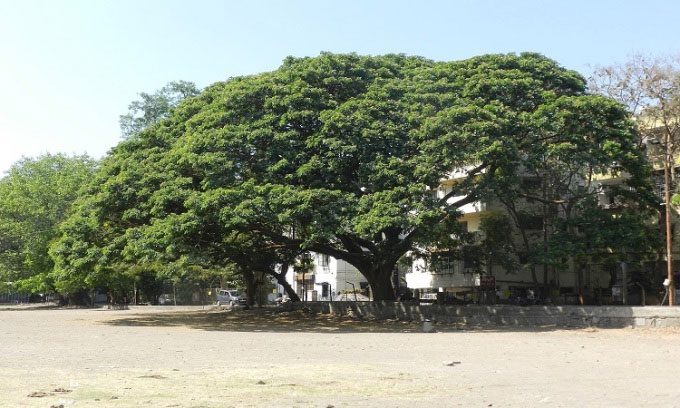A 680-ton Old West Indian Tamarind Tree Relocated Closer to the River to Make Way for Two High-Rise Apartments.
The Old West Indian Tamarind Tree has withstood over 100 years of harsh weather, surviving floods and storms. However, some residents are concerned that this famous tree may not withstand the latest challenge: a 15-meter move closer to the New River to make room for two towering apartment buildings.

The West Indian Tamarind tree has been relocated 15 meters from its original position. (Photo: Wikimedia Commons)
One year ago, the 680-ton tamarind tree was lifted, roots and all, as construction teams prepared to break ground on a $500 million project. The ancient tree was moved closer to the water, but this was not its final destination. For nearly a year, the tamarind tree has been sitting on a grassy slope nearly 2 meters above ground level, awaiting the construction of a new seawall. During this time, contractor Asi Cymbal indicated that the collapsing seawall needed replacement to properly support the tree. The process of building the new seawall began a few months ago and has now been completed.
Last week, the tamarind tree was moved to a new location approximately 4.5 meters from the water’s edge. “The tamarind tree has been preserved and relocated to its new home along the riverbank in downtown Fort Lauderdale. We are pleased to announce that the preservation process was successful and the tamarind tree is very healthy,” stated Cymbal.
This is not an ordinary tamarind tree. The Florida State Forestry Agency recognized it as “Florida Champion” in 1982, acknowledging it as the largest of its species in the state. It is likely one of the largest in the United States, standing at 24 meters tall with a lush canopy covering an area of 40 meters. In an effort to protect this valuable tree, city officials designated it for special protection in 1987, requiring a permit before it could be moved or cut down. Cymbal was granted permission to relocate the tree after agreeing to pay the city $1 million if the tree dies within five years of relocation.
Derrel Thompson, a local resident living near the majestic tree, believes that Cymbal may have to pay that amount. “The tamarind tree is no longer the same. It is still alive, but it is not as lush and will never recover from the relocation process. When they lifted the tree, they severed too many roots,” stated Asi Cymbal.
Activist Ted Inserra in Fort Lauderdale checks on the tamarind tree almost daily on his way to work. “With all the construction happening around it, they will have to drill piles for the foundation. The tree will have to endure all the vibrations from the ground. We don’t know if the root system can withstand that,” Inserra said.


















































